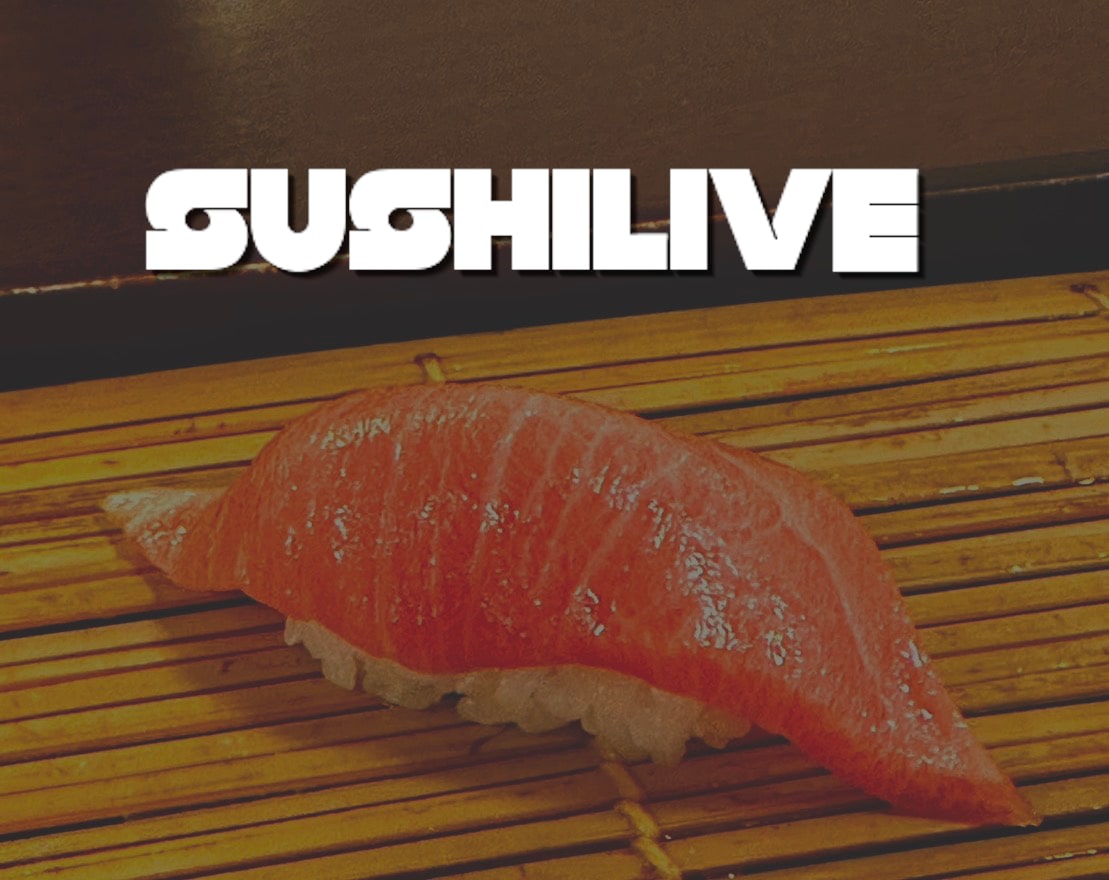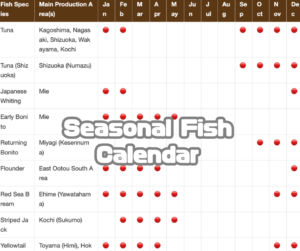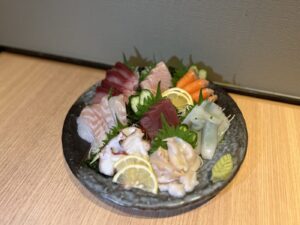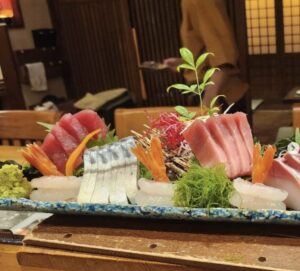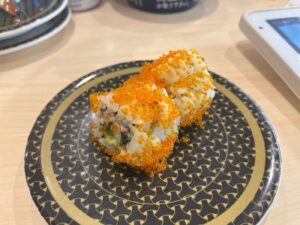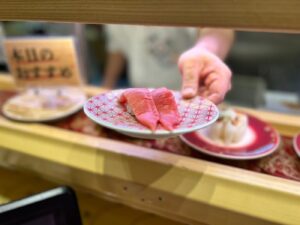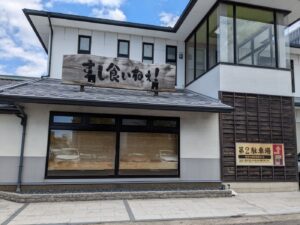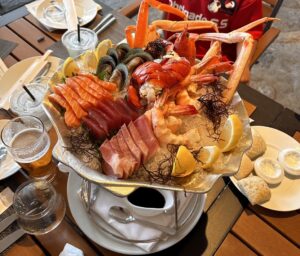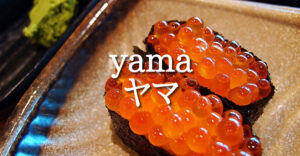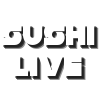table of contents
Originated in Osaka! Conveyor belt sushi born in a merchant town
Popularity exploded on the occasion of the Osaka Expo! Changes in conveyor belt sushi
What is the difference between conveyor belt sushi and ordinary sushi restaurants?
price
Shop setup
Purpose of entering the store
Popular conveyor belt sushi chains, history and features
Artisanal conveyor belt sushi
Kanazawa Maimon Sushi
Gatten Sushi
Genroku Sushi
Nigiri Chojiro
Conveyor belt sushi Misaki
Sushi Katsu
Daiki Suisan
Robotic conveyor belt sushi
Sushiro
Kura Sushi
Kappa Sushi
Hama Sushi
Fish Bee
Expectations for the future of the conveyor belt sushi industry!
One of the most energetic industries in the restaurant industry is conveyor belt sushi.
If you notice, many conveyor belt sushi restaurants have opened one after another in your neighborhood.
When did conveyor belt sushi start to flourish?
From the origin of conveyor belt sushi, we will explain the characteristics and appeal of major chains.
Originated in Osaka! Conveyor belt sushi born in a merchant town
Reasonable price, family friendly atmosphere.
There are many reasons why conveyor belt sushi restaurants are so popular. Conveyor belt sushi restaurants are already familiar to everyday life, but where did this idea come from?
Conveyor belt sushi was invented in 1948, shortly after the war.
Yoshiaki Shiraishi, founder of the conveyor belt sushi chain Genki Sushi (then Genroku Sushi), which is still alive today, was inspired by the conveyor belt of a beer factory.
After many twists and turns, conveyor belt sushi actually appeared in 1958, about 10 years later.
The first store opened in Higashiosaka City, and the low price and clarity of the price captured the hearts of the merchant town of Osaka.
It is said that this concept led to its subsequent development.
Yes, the history of conveyor belt sushi has a history of more than half a century.
Even today, a stone monument stands in front of this first conveyor belt sushi restaurant to convey his achievement.
Popularity exploded on the occasion of the Osaka Expo! Changes in conveyor belt sushi

Genroku Sushi later patented conveyor belt sushi in 1962 under the name “Conveyor Swivel Dining Table” and got a chance to further limelight at the 1970 World Expo in Osaka.
Genroku Sushi, which participated in the Expo, won the Meal Excellence Award.
Genroku Sushi had already opened its first franchise store in Sendai City, Miyagi Prefecture in 1959, and with this, it began to attract attention on a nationwide level.
Conveyor belt sushi, which originated from Genroku Sushi, later expired the patent for Genroku Sushi’s conveyor belt, and many chain restaurants were born, and along with that, the technology also evolved significantly.
With the development of automatic tea dispensers and sushi robots, conveyor belt sushi finally grew to a 700 billion yen market in 2021.
What is the difference between conveyor belt sushi and ordinary sushi restaurants?

Many people may say that they only eat conveyor belt sushi.
The conveyor belt sushi has such a large number of stores, and the advantage is that you can enter it very easily.
So what is the difference between conveyor belt sushi and ordinary sushi restaurants? I will explain the differences between the two categories.
price
First of all, it goes without saying that the price is the biggest difference. There are also conveyor belt sushi in the high price range, such as gourmet conveyor belt sushi, but compared to so-called non-rotating sushi restaurants, conveyor belt sushi restaurants basically have a fixed price for one plate, and sushi is generally offered at a reasonable price.
On the other hand, the price of ordinary sushi restaurants may change depending on the supply status of the ingredients and the purchase price, and the quality generally exceeds that of conveyor belt sushi, but the price is naturally higher than conveyor belt sushi.
Shop setup
Conveyor belt sushi has also diversified, and there are restaurants that do not rotate now.
However, the mainstream style is probably one in which the lane where the sushi rotates plays a leading role. The standard style is that table seats are installed mainly in the conveyor belt lane.
Tea and chopsticks are often self-service, and tableware is often taken and used by customers themselves, so they often use items that are difficult to break.
In the case of sushi restaurants that do not turn, there are counter seats where you can see the ingredients, and usually the itamae holds the sushi in front of you. Restaurants with a higher price range that offer omakase courses often focus on the quality of not only sushi but also single dishes, tea, desserts, tableware, etc.
Purpose of entering the store

The conveyor belt sushi restaurant has a casual feel that small children can enter together.
The main purpose is to enjoy sushi with family and friends you know or alone without hesitation.
In the case of sushi restaurants that do not go around, it is often used for private meals with friends and loved ones, and for new seats with relatives, and it tends to be used by families less often except for chain restaurants with a low price range.
Popular conveyor belt sushi chains, history and features
What kind of conveyor belt sushi restaurants are there near your residence?
A familiar conveyor belt sushi restaurant, a conveyor belt sushi restaurant that I have never entered but am interested in.
There are so many conveyor belt sushi chains, each with its own characteristics and charms.
In addition, there are two main types of styles to serve: old-fashioned artisanal conveyor belt sushi held by artisans and robot-based conveyor belt sushi that is held by robots.
Here, we will introduce the famous conveyor belt sushi chains divided into two categories: artisanal conveyor belt sushi and robot conveyor belt sushi.
Artisanal conveyor belt sushi
Kanazawa Maimon Sushi

Authentic conveyor belt sushi that records the top sales in Kanazawa City, which is said to be the largest battleground for conveyor belt sushi.
Although it is called Kanazawa, it has nearly 20 stores not only in Kanazawa but also in Tokyo, Osaka, Kyoto, etc., and there is also a store in Taipei, Taiwan.
As he claims to serve only what he wants to feed his family and friends, he pays attention to not only fresh fish but also seasonings, rice, nori seaweed, and other details, and while major conveyor belt sushi chains have introduced sushi robots to improve management efficiency, they maintain the original sushi chef style of using fresh fish and being held by artisans.
It is a conveyor belt sushi that is strongly supported not only by discerning Kanazawa people but also by sushi lovers.
Gatten Sushi
“Gaten Sushi” is a conveyor belt sushi chain that has become independent from the Genroku Sushi franchise and now has nearly 100 stores, and is especially well known among the major conveyor belt sushi chains that Itamae puts out in the grip.
We are particular about being a gourmet conveyor belt sushi that provides the quality of so-called non-spinning sushi that is served in front of our eyes by craftsmen at a reasonable price, but one of the characteristics is that there are 64 stores in Japan and 34 overseas, which is a large overseas ratio.
Recently, there are stores that offer sushi made by robots, but “Gaten Sushi” is supported by many sushi lovers because it pursues affordable luxury.
Genroku Sushi
Genroku sushi is known as the original conveyor belt sushi.
The conveyor belt sushi was invented and patented by Yoshiaki Shiraishi of “Genroku Sushi”, so in the past, the only conveyor belt sushi was “Genroku Sushi”.
After that, as the patent expired, various conveyor belt sushi products spread throughout the country, and franchise restaurants under the umbrella became independent, and chain restaurants such as Genki Sushi, Hiroku Sushi, and Nigiri Chojiro were born.
Currently, it is a chain of about 10 stores mainly in Osaka, but it is still operating in the old-fashioned artisan-style conveyor belt sushi format, and it is truly a conveyor belt sushi chain that can be said to be the father of conveyor belt sushi.
Nigiri Chojiro
“Nigiri Chojiro” is an artisan-type conveyor belt sushi that has more than 60 stores mainly in the Kansai region, and there are several stores in Tokyo and also home delivery sushi.
Although it is conveyor belt sushi, it is written on the official website that it provides quality comparable to that of sushi restaurants at the counter that do not turn, and although the price is high, it is highly evaluated by sushi lovers for its good cost performance.
Some stores have a fish tank in the store, and some sushi ingredients are reasonably priced, but if you want to eat delicious sushi, but the robot conveyor belt sushi is a little, but high-end restaurants are expensive, it is recommended conveyor belt sushi.
Conveyor belt sushi Misaki

“Conveyor belt sushi Misaki” is mainly located in front of stations in Tokyo, and there are stores where craftsmen hold sushi in front of you and stores where robots make sushi.
THE OPERATOR, KYOTARU, IS A SUBSIDIARY OF FOOD & LIFE COMPANIES, WHICH DEVELOPS SUSHIRO. It is a gourmet conveyor belt sushi that is different from the robot Sushiro.
Misaki’s specialty is high-quality tuna carefully selected from all over the world. For a limited time, we offer not only medium, large, and lean meat, but also rare parts of natural tuna such as peeled and chikara-mi.
In addition, you can enjoy seasonal seafood purchased from Toyosu Market and red shari containing aged red vinegar at a reasonable price.
At artisan stores, you can order while communicating with the craftsmen. We are particular about in-store cooking by artisans and aim for conveyor belt sushi that Sushiro cannot do.
Sushi Katsu
Kaishi Sushi Katsu, which has seven stores in the Kanto region, prepares about 200 kinds of fresh ingredients, and artisans carefully select the ingredients.
We recommend the signature menu “Ippon-conger tsuke”. Made by a unique manufacturing method and boiled softly down to the small bones, the conger eel has a good mouthfeel and is a gem with an exquisite flavor and texture. The sauce on one bold conger eel will whet your appetite.
In addition, the original menu devised by craftsmen based on the purchased material and offered only every day is also attractive.
When announcing recommended products and freshly made sushi, a microphone performance by an artisan livens up the place.
Daiki Suisan
Daiki Suisan was born in Osaka as a wholesale company of salted dried fish.
With about 45 stores mainly in Osaka, it is an artisanal conveyor belt sushi that holds freshly prepared fish in front of you.
We purchase seafood through a distribution system directly from the production area centered on Sakaiminato in Tottori Prefecture, and offer a large selection of high-quality ingredients at low prices.
One of Daiki Suisan’s proud dishes is the outstanding freshness of “hon tuna”. We can enjoy rare parts such as kamatro and cheek meat because we dismantle and provide whole tuna from markets around the world with advanced aquaculture technology.
In addition to the standard ingredients, you can also taste rare natural fish.
Robotic conveyor belt sushi

Sushiro
Sushiro, the head of the conveyor belt sushi industry with more than 650 restaurants in Japan Japan (March 2023).
Sushiro opened its first store in Toyonaka City, Osaka Prefecture in 1984, and since the beginning of the 21st century, it has expanded into the Kanto and Chubu regions, expanding nationwide.
Since 2011, we have been actively opening stores overseas, and as of December 2022, the number of overseas stores exceeded 100, and we are continuing to make good progress toward 200 stores by 2030.
Sushiro’s sushi is made by sushi robots, some of which cost 2.5 million yen and hold sushi. Due to the abundance of desserts, it is very popular with children and women. The fact that customers are satisfied through expensive investments and customer-conscious menu development may also be the reason why we have won the first place in the industry.
Kura Sushi
Focusing on families, the service for children is “Kura Sushi”, a robot conveyor belt sushi like Sushiro.
Kura Sushi was founded in Sakai City in 1977 and has developed box seats, which are rare for conveyor belt sushi restaurants, and has built a new concept of conveyor belt sushi.
Kura Sushi is famous not only for its robots that hold the shari, but also for introducing advanced technologies one after another to make it contactless in line with the times.
In addition, “Bikkura Pong!”, which was introduced in 2000, is an innovative project that allows children to play games by throwing in a plate that has been eaten, and it is extremely popular with children.
For children, Kura Sushi’s sushi is basically without wasabi.
“Just before wasabi,” which is added just before wasabi, is also highly regarded for both convenience and freshness.
Kappa Sushi
Kappa sushi is said to be superior to others in terms of price.
Starting with the all-you-can-eat “Eat Ho” project, the low-priced side menu is also a factor in its popularity.
Kappa Sushi became a hot topic not only for the robots that hold the shari, but also for the appearance of robots for serving and transporting.
Kappa Sushi was founded in 1973, and in recent years has also started a conveyor belt sushi service for business trips.
Instead of relying on the advantages of price alone, we are launching flexible services one after another.
Hama Sushi
Hama Sushi, which boasts the second largest number of stores in the industry, is characterized by a full range of technologies such as the use of robots and apps for customer service.
HamaSushi, which opened its first store in Ashikaga City, Tochigi Prefecture, was founded in 2002.
As a young company, the implementation of original ideas is wonderful, and there are many features that make customers happy, such as the introduction of the industry’s first drive-thru system and the reduction of waiting time by using the app.
We are also particular about the development of original soy sauce, and in recent years, take-out one-coin bowls with tuna and salmon on them have become popular.
Fish Bee
Genki Sushi develops “fish bei”, “genki sushi” and “senryo” in the sushi industry.
The company, which is based on Genroku Sushi, the founder of conveyor belt sushi, is the main force of “fish bei”.
The strength of the restaurant is the “Triple Smile Lane” where vehicles bring sushi.
Yes, fish bei is not strictly rotating sushi, but it gained popularity due to its reasonable price and entertainment element.
This service gives excitement not only to children who like rides, but also to adults, and fish bei is known among conveyor belt sushi restaurants.
Since it is a full-order system, which is unusual for conveyor belt sushi, it is also highly evaluated for its contribution to the food loss problem.
Expectations for the future of the conveyor belt sushi industry!

Challenging the image of “sushi = luxury”, conveyor belt sushi has created a new category as reasonable popular sushi.
Reasonable prices and various services for customers visiting with families have become popular, and the market size has now exceeded 700 billion yen, making it a major presence in the restaurant industry.
The efficiency of sales has also progressed, and now not only conveyor belt sushi provided by old-fashioned artisans but also robot-based conveyor belt sushi has a large presence.
Sushi made with robots is not of high quality and there are pros and cons to sushi lovers, but there is no doubt that it plays a part in the booming conveyor belt sushi industry.
In the Edo period, sushi was known as a popular food.
Conveyor belt sushi is a big presence in the sense that it restores such sushi to its original form.
I am very interested in how it will develop and change in the future.

